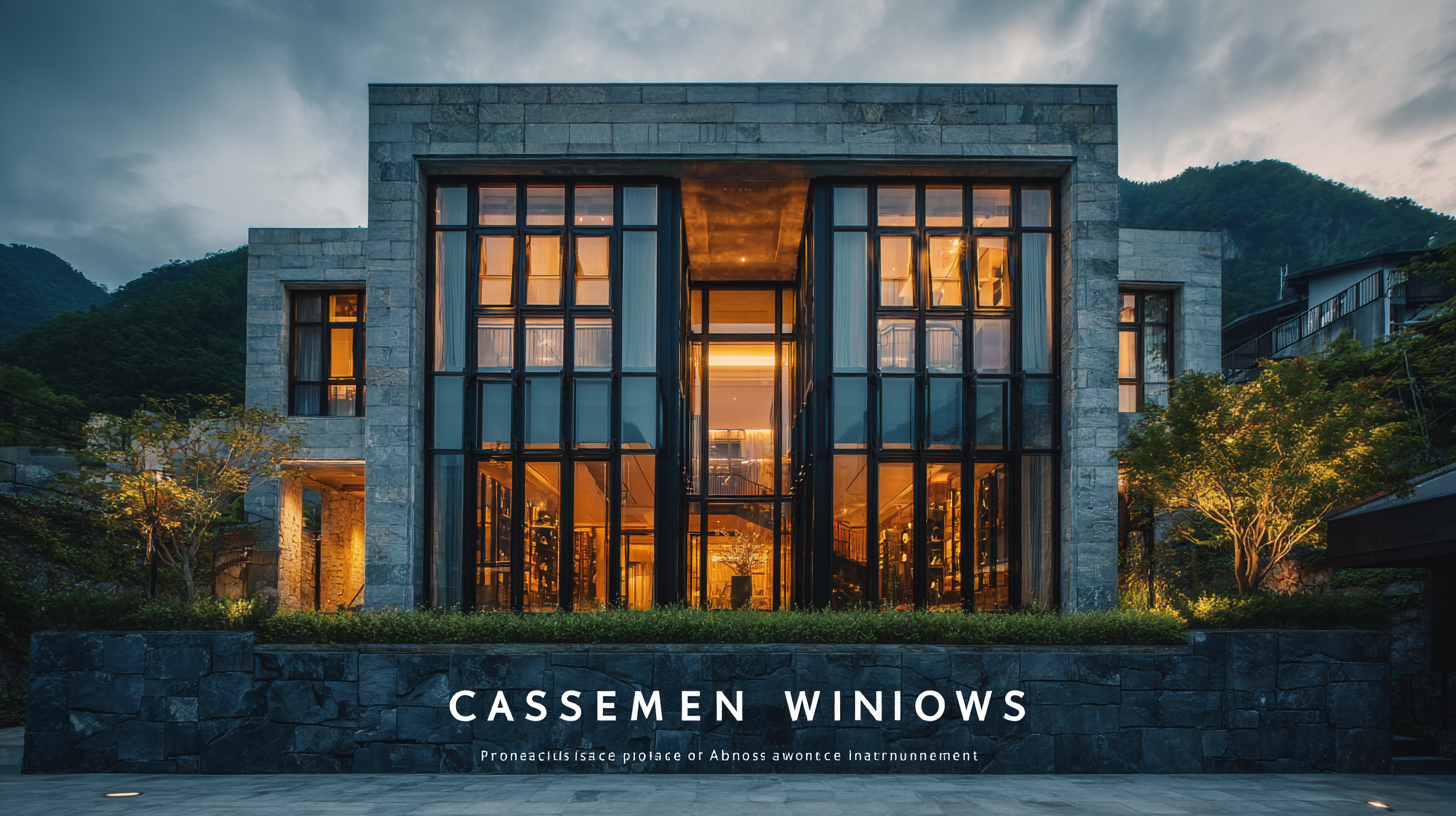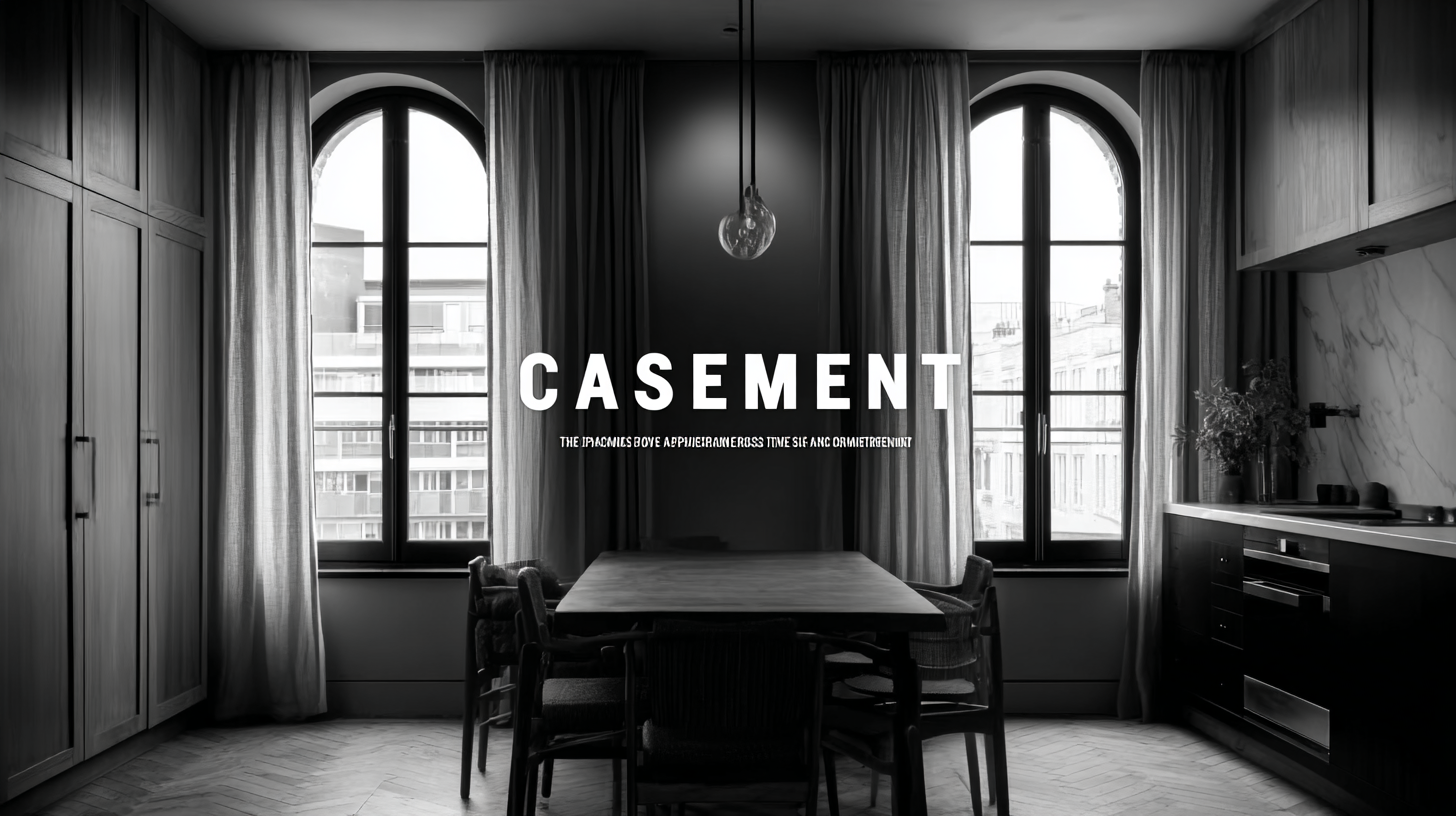
Transforming Spaces: Innovative Applications of the Best Casement Windows for Modern Architecture
In the realm of modern architecture, the choice of windows plays a pivotal role in shaping both functionality and aesthetics. Casement windows, with their versatile design and ability to capture natural light while promoting ventilation, have become a top choice for innovative architectural projects. These windows not only enhance the visual appeal of contemporary spaces but also offer practical solutions for energy efficiency and air circulation. As architects and designers continue to push the boundaries of creative expression, the application of casement windows is evolving, showcasing their potential to transform residential and commercial interiors alike. This blog will explore the top strategies for incorporating casement windows into modern architecture, highlighting their benefits and the innovative ways they can redefine spaces. Join us as we delve into the world of casement windows and discover how they can elevate design and functionality in today's architectural landscape.

Benefits of Professional After-Sales Service for Casement Windows in Modern Architecture
When considering modern architecture, the significance of casement windows extends beyond aesthetics; they provide unparalleled functionality and energy efficiency. Installing these windows can greatly enhance natural light and ventilation within a space, creating an inviting atmosphere that resonates with contemporary design principles. However, the benefits do not end with the initial installation.
A professional after-sales service is crucial in maintaining the integrity of casement windows. This service ensures that any potential issues, such as sealing problems or operational difficulties, are addressed promptly, preserving the windows' performance over time. Additionally, trained technicians can provide valuable advice on care and maintenance, helping homeowners to maximize the longevity of their investment.
As modern design increasingly incorporates expansive glass features and sustainable materials, the expertise offered through after-sales support becomes a vital component of a well-rounded architecture plan, ensuring that every detail functions optimally while enhancing overall property value.
Cost Analysis: Comparing Repair Expenses for Casement Windows with Other Types
When evaluating the costs associated with maintaining casement windows, it’s essential to compare their repair expenses to those of other window types, such as double-hung or sliding windows. Casement windows, known for their energy efficiency and superior ventilation, can sometimes come with higher initial installation costs. However, their durability often leads to lower long-term maintenance expenses. Many homeowners find that the unique crank mechanism and tight seal of casement windows require less frequent repair compared to traditional options that might develop issues like drafts or difficulty in operation.

In contrast, while double-hung windows may have a more affordable upfront price, their complexity can result in higher repair costs over time. Common problems include issues with the window sashes and the balance systems, which can necessitate costly professional repairs. Sliding windows, while easy to operate, can suffer from track alignment issues, leading to additional maintenance expenses. Ultimately, when considering the repair expenses of casement windows versus other types, homeowners may see that the investment in quality casement windows can save money over time, proving them to be a wise choice in modern architecture.
Industry Statistics: The Rise of Casement Windows in Modern Building Design
The rise of casement windows in modern building design is not merely a trend; it reflects a significant shift in architectural preferences over recent years. Industry statistics reveal that the demand for casement windows has surged by over 20% in the last decade. This increase can be attributed to their superior energy efficiency, which is particularly essential in today's eco-conscious market. The design features of casement windows, including their tight seal and larger glass area, contribute to lower energy costs and reduced environmental impact, making them an attractive choice for both developers and homeowners alike.
Moreover, casement windows offer unmatched versatility in style and functionality, blending seamlessly with contemporary aesthetics. As architects increasingly focus on maximizing natural light and enhancing ventilation, casement windows stand out as an ideal solution. Statistics show that projects integrating such windows not only achieve higher energy ratings but also enhance the overall value of the property. The trend indicates a growing recognition among builders and clients of the benefits that these innovative windows bring to modern architecture, fostering a sustainable and stylish urban environment.

Tips for Selecting the Right Casement Windows to Minimize Maintenance Costs
When it comes to modern architecture, selecting the right casement windows can significantly impact both aesthetics and maintenance costs. Casement windows are known for their versatility and energy efficiency, making them a popular choice for contemporary designs. When choosing the best casement windows, it’s essential to consider materials that require minimal upkeep, such as fiberglass or vinyl. These materials not only resist warping and fading but also provide durability against harsh weather conditions, ultimately reducing long-term maintenance expenses.
In addition to material, the design and functionality of the windows should complement the overall architectural style of your space. Windows that feature double-glazing technology offer improved insulation and noise reduction, essential for maintaining a quiet and comfortable indoor environment. Furthermore, selecting windows with easy-to-clean features, such as tilt-in sashes, can make regular upkeep a breeze. By prioritizing these factors, homeowners can ensure that their casement windows serve both form and function, creating a beautiful living space that stands the test of time while keeping maintenance costs at bay.
Transforming Spaces: Innovative Applications of the Best Casement Windows for Modern Architecture
| Window Style | Material | Energy Efficiency Rating | Maintenance Level | Average Cost ($) |
|---|---|---|---|---|
| Classic Casement | Vinyl | A+ | Low | 350 |
| Modern Minimalist | Aluminum | A++ | Very Low | 500 |
| Traditional Wood | Wood | B | Medium | 600 |
| Eco-Friendly | Composite | A++ | Low | 450 |
| Architectural Design | Fiberglass | A+ | Very Low | 700 |
Innovative Features of Modern Casement Windows That Enhance Longevity and Performance
Modern casement windows are no longer just functional elements; they are design statements that elevate contemporary architecture. One of the most innovative features of these windows is their exceptional energy efficiency. With improved insulation materials and advanced sealing technologies, casement windows minimize air leakage and effectively regulate indoor temperatures. This not only lowers energy costs but also contributes to a more sustainable living environment.
When choosing casement windows, consider opting for ones with low-emissivity (Low-E) coatings. These coatings reflect infrared light while allowing natural sunlight to enter, keeping homes warm in the winter and cool in the summer. Additionally, look for windows equipped with multi-point locking systems for enhanced security and peace of mind.
Another notable feature is their durability, which is achieved through high-quality materials like fiberglass and vinyl. These materials resist fading, warping, and cracking, ensuring that your windows maintain their aesthetic appeal over time. It's wise to select windows with a manufacturer’s warranty, as this can provide long-term assurance of performance and reliability.
For maintenance, clean the window tracks regularly to ensure smooth operation, and inspect seals for any wear to prolong the lifespan of your casement windows. By focusing on these innovative features, homeowners can significantly enhance their living space while enjoying the benefits of modern architecture.